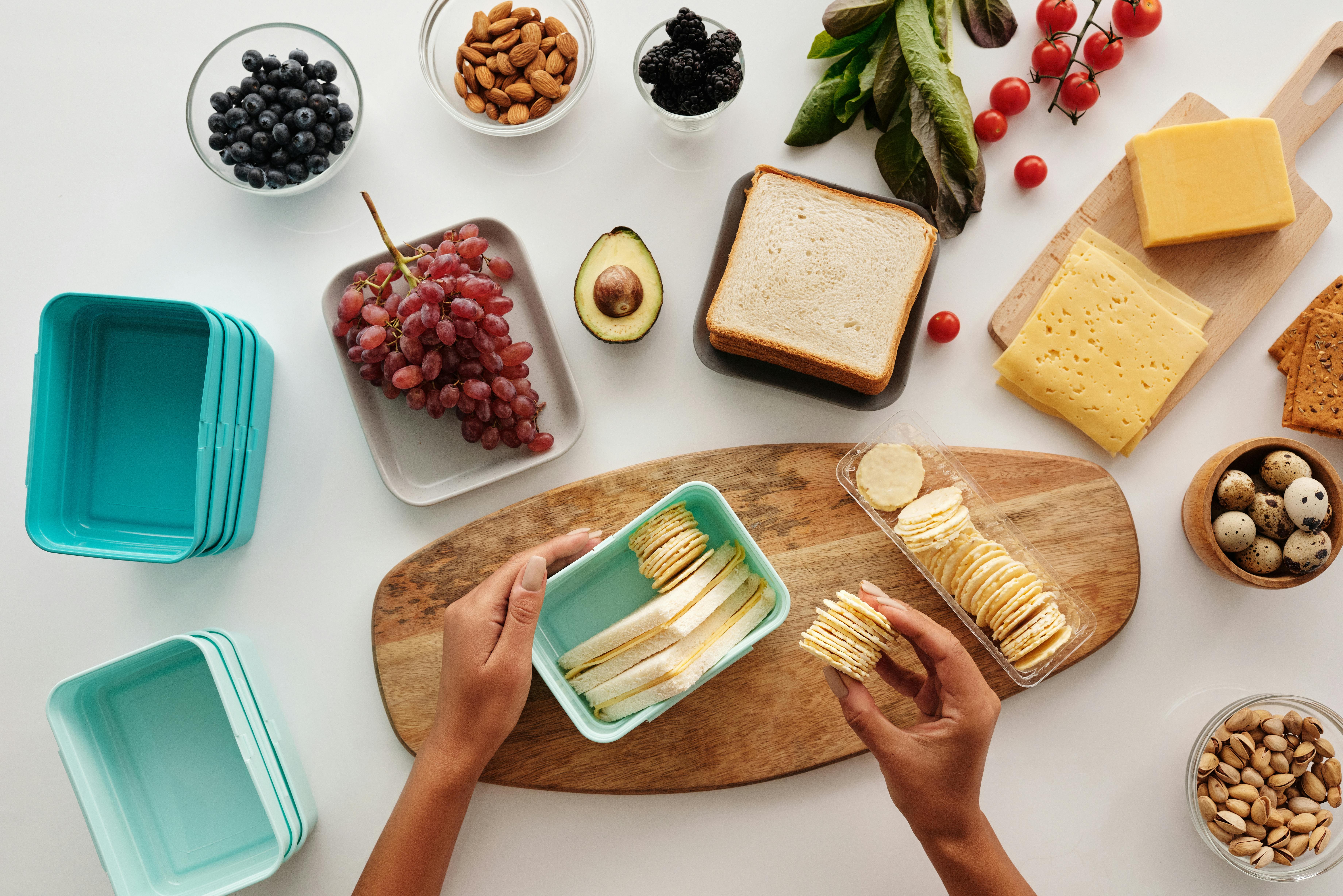Propagating blueberries from cuttings is a great way to propagate your favorite varieties of blueberries. This method is simple and easy to do, and can give you healthy and productive blueberry plants in just a few months. With the right steps and the proper care, you can have a bounty of blueberries growing in no time!Propagating blueberries from cuttings is a simple and inexpensive way to increase your blueberry plant population. Here are the steps to get started:
1. Choose healthy and mature woody stems from the current season’s growth, ideally 8-10 inches in length. Remove any leaves and buds from the lower half of the stem.
2. Dip the end of the cutting in rooting hormone, or sprinkle it on lightly if you are using a powdered form. This will help stimulate root growth.
3. Create a potting mix for your cuttings by combining equal parts peat moss, perlite, and vermiculite or sand. Moisten the mix slightly before planting.
4. Place your cutting into a pot filled with the potting mix up to two-thirds of its length, making sure that it stands upright with all leaves above the soil line. Firmly press down around it to ensure good contact with the potting mix below.
5. Place a clear plastic bag over each pot to create a humid environment that will help keep moisture in while still allowing air circulation at the same time. Secure it tightly with an elastic band or tie around the top of each pot’s rim to keep it in place.
6. Place your pots in an area that receives indirect sunlight and is well ventilated but still humid (such as near a bathroom window). Water them regularly but not too much (as this can cause root rot).
7. After several weeks of regular care, you should begin to see new roots forming on your cuttings – at this point they can be transplanted into larger pots or planted directly into your garden bed!
Required Materials for Propagation
Propagating plants is a great way to increase your collection and share plants with others. To successfully propagate, you need the right materials. The most important materials for propagation are cuttings, a rooting medium, and a container.
Cutting is the most vital part of propagation. It is the stem or leaf from which new growth will emerge. Cuttings should be taken from healthy plants with no signs of disease or damage. The cutting should be at least 4 inches long and have at least two nodes (the point where leaves emerge from the stem). Make sure to use sharp pruning shears or scissors to take your cuttings so you don’t damage the parent plant.
The rooting medium is where the cuttings will root and grow into new plants. A rooting medium can be anything from water to soil-less potting mix to perlite or vermiculite mixtures. It’s important to use a medium that has good drainage so roots can develop properly without rotting or becoming waterlogged.
Finally, you need a container for your cutting and rooting medium. Containers can be anything from glass jars to plastic pots as long as they are clean and have drainage holes in the bottom for excess water to escape. Be sure not to over-pot; choose a container size that is just large enough for your cutting, otherwise it may become root bound before it has time to develop new roots.
Having the right materials for propagation is essential for success when growing new plants from cuttings. With these materials—cuttings, rooting medium, and containers—you’ll be able to propagate beautiful new plants in no time!
Preparing the Cuttings
Taking cuttings is a great way to propagate plants, and it’s easy to do. To prepare the cuttings for rooting, you’ll need to make sure that you have clean, sharp scissors or pruners. You’ll also need a potting mix or other medium that will support the cuttings until they can be transplanted into their own pots. You may also need rooting hormone, depending on the type of plant you are propagating.
When taking your cuttings, make sure that each one has at least two sets of leaves and that the cutting length is about 4 inches (10 cm). Remove any flowers or flower buds from the cutting and dip it in a rooting hormone if desired. Then place the cutting in your potting mix and lightly tamp it down so it stays in place. Water your potting mix thoroughly before placing the cuttings in it, as this will help encourage root growth.
Once your cuttings are prepared and planted, place them in an area with bright, indirect light and keep them moist but not soggy for best results. You should see new roots forming within a few weeks if all goes well!
Gathering the Cuttings
Gathering the cuttings is the first step in propagating plants. To begin, you need to find a healthy parent plant with strong stems or branches. Then, use a sharp and clean cutting tool to make a 45-degree angled cut at the base of the stem or branch and remove it from the parent plant. Make sure that each cutting is at least four inches long and has two to three sets of leaves. Place each cutting in a labeled paper bag or wrap them in newspaper so that you can easily identify them later.
Preparing the Cuttings
Once you have gathered your cuttings, it’s time to prepare them for planting. Start by trimming off any leaves from the bottom third of each cutting and discarding them. Then, dip each cutting into rooting hormone powder or gel to help stimulate root growth. Once all of your cuttings are prepped, fill containers with well-draining potting soil and make small holes in it for each cutting.
Planting the Cuttings
Now that your cuttings are ready, it’s time to plant them! Start by carefully inserting each cutting into its own potting soil hole until it’s about halfway buried in soil. Make sure that all of your cuttings are planted at an angle so that water can easily drain out of their containers when watered. Finally, water your newly planted cuttings lightly, being careful not to overwater them as this can cause root rot and other issues.
Water Requirements for Proper Growth
Water is essential for any plant to grow and thrive. Without adequate water, a plant will not be able to photosynthesize or absorb nutrients from the soil, and will eventually die. For this reason, it is important to understand the water requirements of a particular plant in order to provide the optimal environment for its growth.
The amount of water that a plant needs can vary greatly depending on the type of plant, its soil conditions, and the climate in which it is growing. Generally speaking, most plants need about 1 inch of water per week during the growing season. This amount can be provided either through rainfall or irrigation. Plants grown in containers may need more frequent watering due to loss of moisture through evaporation.
It is also important to monitor soil moisture levels to ensure that plants are getting enough water but not too much. Overwatering can lead to root rot or other nutrient deficiencies, while underwatering can cause wilting and other signs of stress. A simple way to test soil moisture levels is by using a moisture meter or by digging into the soil and feeling it with your fingers.
Knowing how much water different plants need can help gardeners create an optimal environment for their plants’ growth. By providing the right amount of water at the right time, gardeners can ensure that their plants have everything they need for healthy growth and development.

Light Requirements for Proper Growth
The right amount of light is essential for proper plant growth and development. Without enough light, plants will not grow and develop as they should. In order to ensure that your plants get the right amount of light, you should be aware of the different types of light that are available and how much each type provides. Different types of lights provide different amounts of energy which can affect the growth and development of your plants. Natural sunlight is the best source of light for most plants, but there are other options available such as artificial lighting and greenhouse lighting.
When choosing the right type of light for your plants, it is important to consider the amount and intensity needed for proper growth. Different types of plants require different amounts of light, so it is important to research what type and how much light a particular plant needs in order to thrive. Most indoor plants require six to eight hours of indirect sunlight per day in order to grow properly. If you are growing outdoor plants, you should make sure that they receive at least six hours of direct sunlight each day.
For indoor plants, artificial lighting can be a great option as it provides a consistent source of energy throughout the day. When using artificial lights, make sure that you use a bulb with an appropriate spectrum such as fluorescent or LED bulbs that can provide enough energy for both flowering and vegetative growth. Additionally, you should also consider investing in a timer so that your plants receive the same amount of light each day regardless of any changes in daylight hours or weather patterns.
Greenhouse lighting can also be used to supplement natural sunlight when growing indoor or outdoor plants. Greenhouse lights provide high intensity light which helps promote vigorous growth in both flowering and vegetative stages. These lights can be used during winter months when natural daylight is limited or during summer months when natural daylight is too intense for some species.
Proper light requirements are essential for healthy plant growth and development so it is important to ensure that your plants are getting the right amount and intensity every day in order to thrive. Researching what type and how much light specific plant species need will help you determine what type of lighting system would best suit your needs as well as help you maintain healthy plant life throughout all seasons!
Soil Requirements for Proper Growth
Soil is an essential component in any garden or landscape, as it provides the necessary support for plants to grow and thrive. The right soil can make all the difference when it comes to having a successful garden or landscape. There are several factors to consider when selecting the right soil for your plants, including texture, structure, pH level, and nutrient availability.
Texture refers to the size and shape of the particles in the soil. Sandy soils have large particles that easily break apart, while clay soils have fine particles that stick together. Loam soils are a combination of both sand and clay with organic matter mixed in. The texture of the soil will determine how well water can pass through it, making it important to choose a soil with a good balance of textures for proper drainage.
The structure of the soil is also important when choosing a soil type for gardening and landscaping. Soils can be classified into three categories: granular, blocky, and platy. Granular soils have large clumps of earth that form aggregates which allow air and water to move through easily; blocky soils form large clumps that help retain moisture; platy soils are flat layers that do not allow air or water to move through easily.
The pH level of a soil is also important when selecting the best type for gardening and landscaping purposes; plants need an appropriate pH level in order to absorb nutrients from the soil efficiently. A pH level between 6-7 is ideal for most plants; however, some plants may require specific pH levels outside this range.
Finally, nutrient availability is also important in determining what type of soil is best suited for gardening and landscaping purposes; nutrient-rich soils provide essential nutrients needed by plants such as nitrogen, phosphorus, potassium, calcium and magnesium as well as trace elements like zinc and copper. Nutrient-poor soils often need amendments such as fertilizer or compost in order to provide adequate nutrition for plants.
When selecting a soil type for your garden or landscape project, it is important to consider all these factors before making a final decision in order to ensure that your plants get what they need to grow successfully. With proper selection and care, you can create an environment that will provide your plants with the best possible growing conditions!
Preparing the Cuttings
Starting a garden from cuttings is an easy and inexpensive way to propagate plants. Cuttings are pieces of stems, roots, or leaves that are cut from a parent plant and used to grow new plants. The best time to take cuttings is when the plant is actively growing, usually in early spring or late summer. To prepare cuttings, first select healthy stems that are free of blemishes and disease. Then use a sterile knife or scissors to take a 3-4 inch cutting just below a leaf node. Remove any leaves from the bottom half of the cutting, dip it in rooting hormone, and place it in moist potting mix or perlite. Be sure to keep the soil moist until the cuttings have rooted.
Caring for Rooting Cuttings
Once the cuttings have been placed in potting mix, they need to be kept warm and humid. Use plastic bags or cloches to create a mini greenhouse environment which will help retain moisture and encourage rooting. Place the containers in an area with bright but indirect light such as a windowsill or under a grow light. Keep an eye on your cuttings and water them whenever the soil feels dry. It can take anywhere from 1-8 weeks for cuttings to root, depending on the type of plant being propagated.
Transplanting Rooting Cuttings
Once your cuttings have rooted you can transplant them into individual pots or into your garden bed. When transplanting rooted cuttings use fresh potting mix and be gentle with them as their roots are fragile. Water well after transplanting and keep in mind that newly propagated plants need extra care while they establish themselves in their new home.
Ongoing Care of the Cuttings
The newly propagated plants need regular watering and feeding for at least two months until they become established in their new home. During this period it is also important to protect them from extreme temperatures such as frost, heat or strong winds which may damage them before they have had time to develop strong root systems capable of sustaining themselves in these conditions. With proper care your propagated plants will soon become strong and healthy additions to your garden!

Conclusion
Propagating blueberries from cuttings is a relatively easy and straightforward process. It can be done with minimal effort, and the results can produce an abundance of healthy blueberry plants. When properly cared for, these plants can provide years of delicious blueberries.
The key to success in propagating blueberries from cuttings is to use the right cutting material, choose a good rooting medium, provide adequate moisture and humidity, and give the new seedlings plenty of light. Taking these steps will ensure that your cuttings will root properly and become healthy plants that will produce an abundance of fruit for years to come.
In conclusion, propagating blueberries from cuttings is a great way to add more plants to your garden at minimal cost. With the right materials and proper care, you can have a new crop of healthy blueberry bushes in no time!



